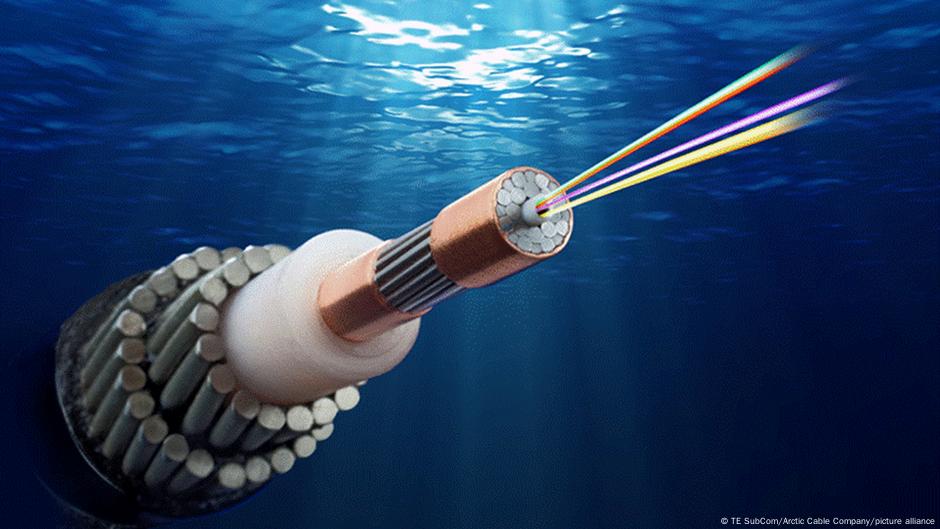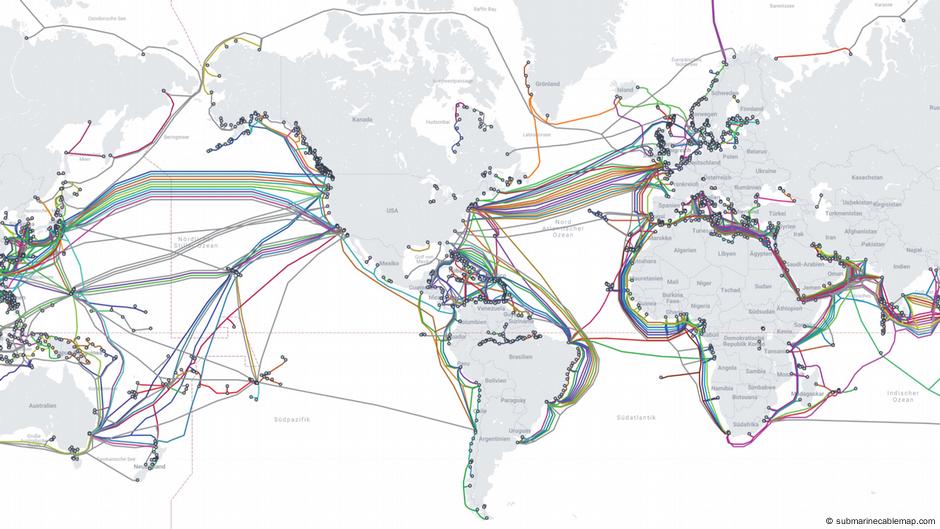
Recent instances, reportedly carried out by a Russian "shadow fleet", have demonstrated that global telecommunications infrastructure is inadequately safeguarded against intentional acts of sabotage.
They are usually designed
Certain submarine cables carry high-voltage direct current (HVDC) - electrical power - over long distances, such as between islands or countries. These cables can also link offshore wind turbines with onshore locations.
Then there are telecommunications cables. They transmit approximately 95% of global data traffic, including internet searches, online shopping, and phone calls – albeit, with a slight signal delay: Calling up a US website from Europe takes roughly 60 milliseconds.
In addition, some cables connect data centers and major network nodes, as well as those for military communication and research, which are more secure than other cables.
Satellites are not a viable substitute for underwater cables.
Only a small portion of global communication occurs via satellites — submarine cables can transmit significantly more data at a lower expense.
Satellite connections are typically slower and more prone to disruptions from external interference.
The IRIS (Infrastructure for Resilience, Interconnectivity and Security by Satellite) program aims to establish more secure, alternative communication channels.
Where are underwater cables typically located?
Globally, there are approximately 500 lines, encompassing a total of 1.4 million kilometers of cable. These cables are so extensive that they could encircle the equator around 30 times. Annual additions of new cables are made.
Most undersea cable connections are situated between Europe and North America across the Atlantic, and between the US and East Asia across the Pacific. However, there is no single, comprehensive map that displays the precise location of every cable.
Platforms such as submarinecablemap.com or TeleGeography do offer maps, but without specific location details.

Approximately 90% of data traffic between Europe and Asia transits through 14 undersea cables off the coast of Yemen. In 2024, Houthi rebels targeted three data cables with a hijacked freighter in the region.
Who lays underwater cables?
In the past, telecommunications service providers, including AT&T and China Telecom, controlled the market and ownership of undersea cables.
Now, it's the major technology corporations such as Google, Microsoft, Meta, and Amazon investing heavily in submarine cables.
Google owns six operational submarine cables and intends to construct additional ones.
Meta owns stakes in 16 existing undersea cables and is planning to build its own global network.
What is the process of building underwater cables?
Modern submarine cables are composed of multiple layers of fiber optic cables that transmit digital information via light pulses.
They are encased in protective layers of steel wire or steel armor, polyethylene, and waterproof materials. These safeguard against the harsh pressure and conditions of the deep sea, thereby ensuring approximately 25 years of lifespan.
Submarine cables with a diameter of over 20cm (7.87 inches) can weigh approximately 40-70 kilograms per metre (88-154 pounds per 3.2 feet).
What is the process of laying underwater cables?
Geologists and engineers identify the most suitable locations for cables, considering factors such as trenches, ocean currents, fishing zones, and shipping lanes.
In the North Sea and Baltic Sea, approximately 1.6 million tons of discarded ammunition from past conflicts also pose a significant challenge.
In deeper waters, up to about eight kilometers, the risk of damage is significantly reduced. The cables are frequently laid directly on the seabed by specially designed cable-laying vessels.
The cable must be kept tight during installation. If there is not enough tension, loops may form in the cable. Conversely, if the cable is too tight, it can cause the cable to float and break.
What causes damage to underwater cables?
Most damage to submarine cables is caused by trawl nets and anchors. However, they are also intentionally damaged: acts of sabotage have been a part of hybrid warfare since the Cold War era. As far back as 1959, the Americans claimed that the Russians had deliberately damaged an underwater cable using fishing nets.
The interception of sensitive information through tapping into submarine cables is a significant concern.
How are subsea cables repaired?
Repairing submarine cables is a complex operation due to the extremely high underwater pressure and the unpredictability of weather conditions.
The repair of submarine cables depends on the extent and depth of the damage. Divers may repair cables in dry chambers, or a cable repair vessel may carefully lift the damaged cable to the surface.
Onboard, technicians replace damaged sections with new ones. Following thorough testing, the cable is carefully recessed and re-laid.
What measures can be taken to safeguard underwater cables?
Submarine cables are generally well shielded from natural threats, but often lack sufficient protection against intentional damage caused by hostile nations, intelligence agencies, or terrorist organizations.
Underwater drones and acoustic sensor systems can potentially identify instances of sabotage at an initial stage.
Certain states are establishing coordinated protection strategies, with close collaboration between the states, submarine cable operators, and international organizations. Specialists are urging the creation of new legal frameworks at the national and international levels, particularly for the event of war.
This article was originally published in its original language.
Author: Alexander Freund
